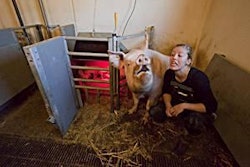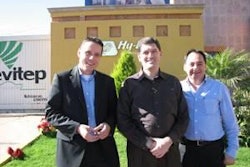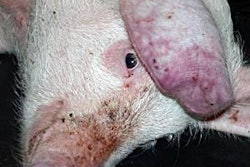.jpg?auto=format%2Ccompress&q=70&w=400)
American Proteins, Hanceville, Ala., the world’s largest poultry rendering facility, is the winner of the 2010 Clean Water Award in the full-treatment category.
Now a two-time winner of the prestigious industry award for excellence in wastewater treatment, American Proteins is one of a new generation of flagship facilities in the U.S. poultry industry that is changing a formerly “out of sight, out mind” discipline into a showcase of environmental stewardship and smart business practice.
American Proteins’ business niche is considered one of the nastiest, and toughest, jobs in the food processing industry – rendering the blood, guts and feathers left over from poultry slaughter and processing into valuable byproducts. But the company has turned that into virtue by continual investment in people and facilities that produce operational excellence.
The Hanceville facility has twice won the Excellence in Industrial Wastewater Treatment Award from Alabama’s Water Environment Association and now for the second time the Clean Water Award sponsored by the U.S. Poultry & Egg Association.
Fred Cespedes, American Proteins group vice president, says, “It’s not an easy business, but it has to be done. Our company spends a lot of money on making the environmental aspects right. We believe in the community and we focus on that.”
One tough business
The American Proteins, Hanceville, facility receives as much as 45 million pounds of offal a week from poultry processing plants across northern Alabama and changes it into feed-grade pet food and poultry meal.
The organic loading treated by the plant is equal to a city of over 900,000 people, and the hydraulic loading equals that of a city of 10,000 people. The plant’s wastewater facility removes harmful pollutants with the following efficiencies:
- Biological oxygen demand (BOD5) – 99.96%
- Chemical oxygen demand (COD) – 99.65%
- Total suspended solids (TSS) – 99.81%
- Total kjeldahl nitrogen (TKN) – 99.52%
- Ammonia (NH3-N) – 99.95%
- Oil and grease (O&G) – 99.90%
The facility’s operators, who receive continual training, collect and perform over 135 in-house analyses during a normal day. These numbers can double when with any unusual or upset condition. They also input 257 data entry points into the computer and log 1,430 items into journals on a daily basis.
Continual investment
Since winning the Clean Water Award in 2004, American Proteins has not rested on those laurels. Recent investment has included a major expansion of the wastewater treatment system to remove additional nutrients. The installation of additional anoxic and oxic tanks made the wastewater system a 4-stage treatment process.
The company also invested in a Supervisory Control and Data Acquisition (SCADA) system and upgrades with direct inline monitoring of ammonia, nitrates, MLSS, pH and ORP.
Other recent investments have included:
- Biogas collection and boiler utilization system
- Anaerobic recycle system
- Aeration and electrical upgrade
- Additional suction and discharge lines with flow meter to anoxic pump station
- Anoxic pump station from No. 1 to No. 2 reactor
- New liner for an aerobic lagoon
Corporate commitment
Cespedes has the responsibility of immediately reporting to the company’s board of directors any operational problems that might involve a violation of environmental permits. “It has to be reported immediately to the board of directors. There is no question; I have to do it; and the board acts right away.”
“To us having a wastewater permit is actually our rendering license,” he explains. “Without it, we couldn’t render. So, the majority of out focus is on environmental issues. That’s our license to stay in business.”
The Clean Water Awards, sponsored annually by the U.S. Poultry & Egg Association, go to two poultry processing facilities – one in full-treatment and one in pre-treatment of poultry processing wastewater.
Fred Cespedes talks about methane recovery and water reuse and recycling at world's largest poultry rendering facility.


















